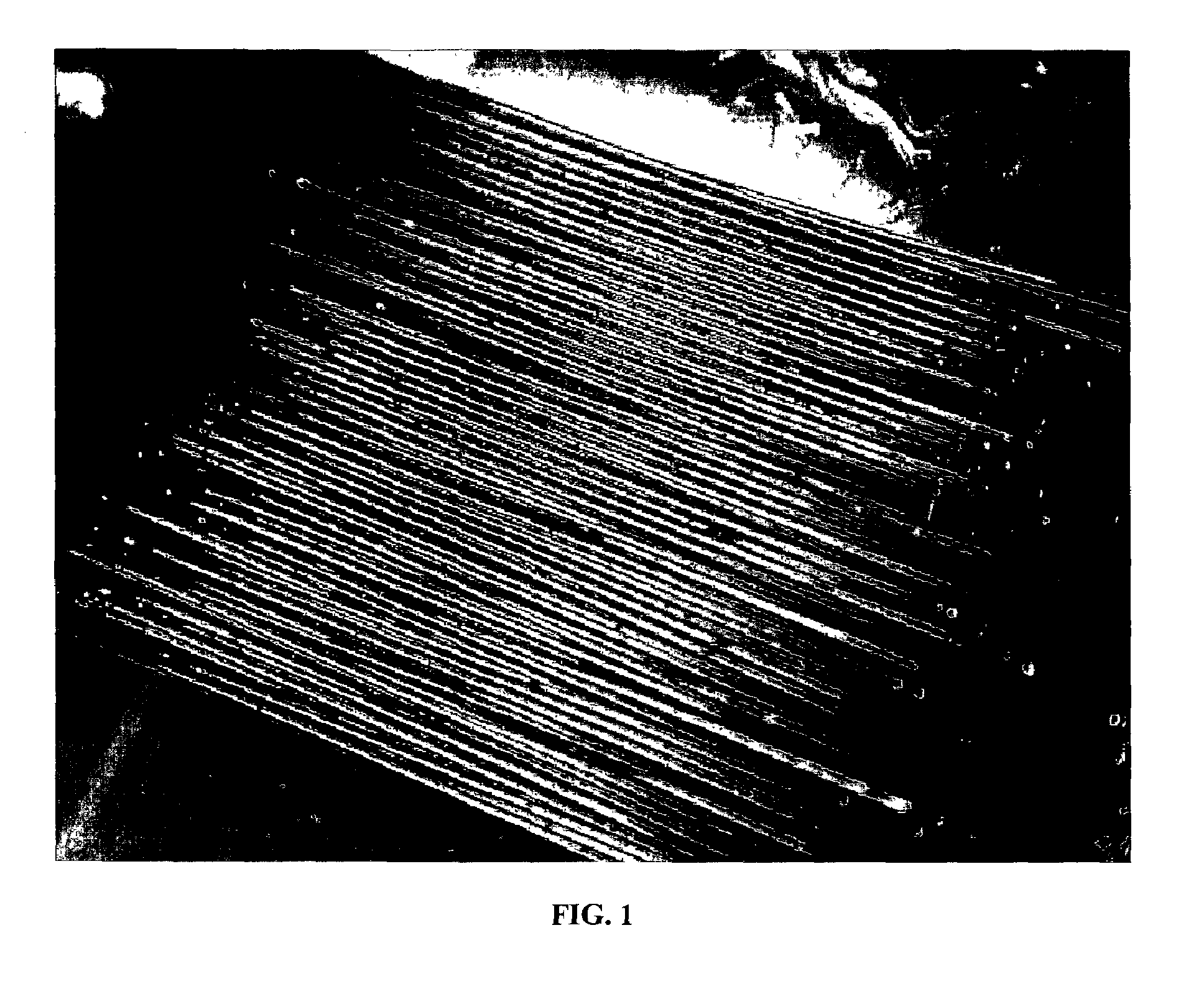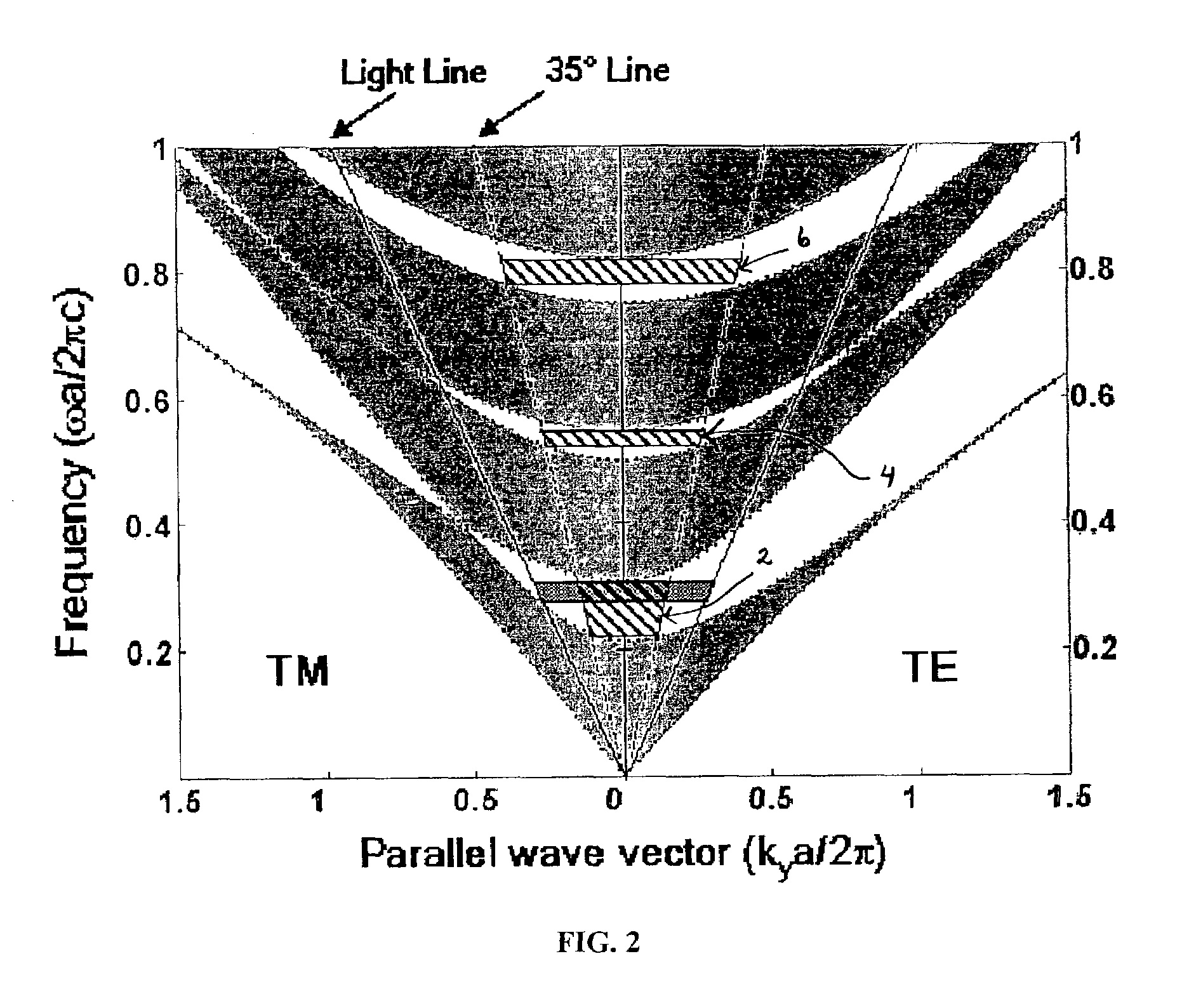Method of forming reflecting dielectric mirrors
a dielectric mirror and mirror technology, applied in the optical field, can solve the problems of fragile mirror fabrication, high cost, and limited control over and achieve the effect of improving the optical properties of mirrors and reducing the cost of production
- Summary
- Abstract
- Description
- Claims
- Application Information
AI Technical Summary
Problems solved by technology
Method used
Image
Examples
Embodiment Construction
[0018]The invention combines some of the advantages of two dissimilar materials in the fabrication of polymeric fibers having on or within them a multilayer dielectric mirror structure. Thermal processing techniques are used to create and then reduce a macroscopic layered dielectric structure to sub-micron length scales, thus establishing a photonic band gap in the mid-IR range. The selection of materials involves the empirical identification of a pair of amorphous materials, such as poly(ether-sulfone)(PES) and arsenic triselenide (As2Se3), which have substantially different refractive indices yet have similar thermo-mechanical properties within a certain thermal processing window. Amorphous materials, such as inorganic glasses and some thermoplastic polymers, have gradual variation in viscosity with temperature when compared to crystalline materials. This is due to the lack of a first-order-thermodynamic transition in an amorphous material as it is cooled from a melt to the glassy...
PUM
| Property | Measurement | Unit |
|---|---|---|
| size | aaaaa | aaaaa |
| size | aaaaa | aaaaa |
| diameter | aaaaa | aaaaa |
Abstract
Description
Claims
Application Information
 Login to View More
Login to View More - R&D
- Intellectual Property
- Life Sciences
- Materials
- Tech Scout
- Unparalleled Data Quality
- Higher Quality Content
- 60% Fewer Hallucinations
Browse by: Latest US Patents, China's latest patents, Technical Efficacy Thesaurus, Application Domain, Technology Topic, Popular Technical Reports.
© 2025 PatSnap. All rights reserved.Legal|Privacy policy|Modern Slavery Act Transparency Statement|Sitemap|About US| Contact US: help@patsnap.com



